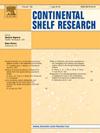Genetic differentiation in populations of two snappers, Lutjanus malabaricus and Pristipomoides multidens, in the Makassar Strait and adjacent waters, Indonesia: Implications for management
IF 2.2
3区 地球科学
Q2 OCEANOGRAPHY
引用次数: 0
Abstract
The Makassar Strait and adjacent waters, which is crossed by the Wallace line, has variations in bathymetry and unique ocean currents. This condition allows for genetic differences in the Malabar blood snapper (Lutjanus malabaricus) and the Goldband snapper (Pristipomoides multidens) in the strait. Specimens were collected from some landing bases in Makassar Strait and adjacent waters as part of Indonesia's Fisheries Management Area (FMA) 713 and assessed using d-loop mtDNA. Both L.malabaricus and P.multidens obtained the same sequencing results of around 400 bp with 67 and 71 of number haplotypes, respectively. The results of the polymorphism of the two species showed high genetic diversity (L.malabaricus: h = 0.9284, π = 0.0434; P.multidens: h = 0.9766, π = 0.0532). Based on differences analysis to examine the population genetic structure showed different results. L.malabaricus was identified as having no population genetic structure. On the other hand, P. multidens has significant (ΦST = 0.07010, p < 0.001) structural differences among sub-areas, the western part of the Makassar Strait, the eastern part of the Makassar Strait, and south of the Makassar Strait, Flores Sea. The different stock units need to be considered in the development of fisheries management and surveillance. Management of fish resources requires a flexible and adaptive approach, taking into account the fishery characteristics of each population and the broad ecosystems in which they occur.
印度尼西亚望加锡海峡及邻近海域两种鲷鱼种群的遗传分化:对管理的启示
望加锡海峡和华莱士线所穿过的邻近水域,在水深和独特的洋流方面都有变化。这种情况允许海峡中马拉巴尔血鲷(Lutjanus malabaricus)和金带鲷(pritipomoides multidens)的遗传差异。从印度尼西亚渔业管理区(FMA) 713的望加锡海峡和邻近水域的一些登陆基地收集标本,并使用d-环mtDNA进行评估。malabaricus和multidens的测序结果相同,分别在400 bp左右,分别有67和71个单倍型。两种植物的多态性分析结果显示:L.malabaricus: h = 0.9284, π = 0.0434; P.multidens: h = 0.9766, π = 0.0532;基于差异分析对种群遗传结构的检验显示出不同的结果。malabaricus不具有群体遗传结构。另一方面,在望加锡海峡西部、望加锡海峡东部、望加锡海峡南部、弗洛勒斯海的子区域间,多登云雀具有显著的结构差异(ΦST = 0.07010, p < 0.001)。在发展渔业管理和监测时需要考虑到不同的种群单位。鱼类资源的管理需要采取灵活和适应的办法,同时考虑到每个种群的渔业特点和它们所处的广泛生态系统。
本文章由计算机程序翻译,如有差异,请以英文原文为准。
求助全文
约1分钟内获得全文
求助全文
来源期刊

Continental Shelf Research
地学-海洋学
CiteScore
4.30
自引率
4.30%
发文量
136
审稿时长
6.1 months
期刊介绍:
Continental Shelf Research publishes articles dealing with the biological, chemical, geological and physical oceanography of the shallow marine environment, from coastal and estuarine waters out to the shelf break. The continental shelf is a critical environment within the land-ocean continuum, and many processes, functions and problems in the continental shelf are driven by terrestrial inputs transported through the rivers and estuaries to the coastal and continental shelf areas. Manuscripts that deal with these topics must make a clear link to the continental shelf. Examples of research areas include:
Physical sedimentology and geomorphology
Geochemistry of the coastal ocean (inorganic and organic)
Marine environment and anthropogenic effects
Interaction of physical dynamics with natural and manmade shoreline features
Benthic, phytoplankton and zooplankton ecology
Coastal water and sediment quality, and ecosystem health
Benthic-pelagic coupling (physical and biogeochemical)
Interactions between physical dynamics (waves, currents, mixing, etc.) and biogeochemical cycles
Estuarine, coastal and shelf sea modelling and process studies.
 求助内容:
求助内容: 应助结果提醒方式:
应助结果提醒方式:


